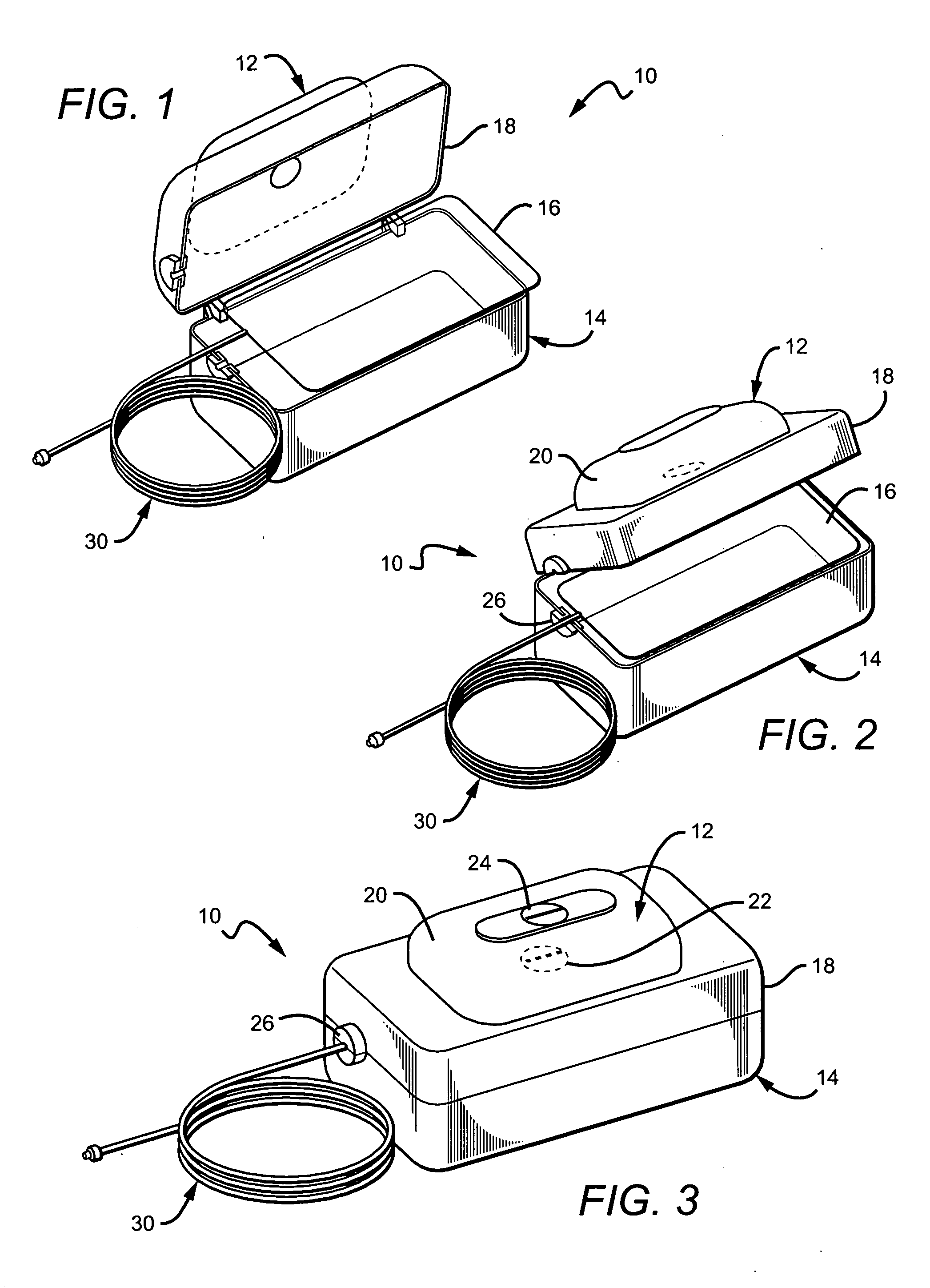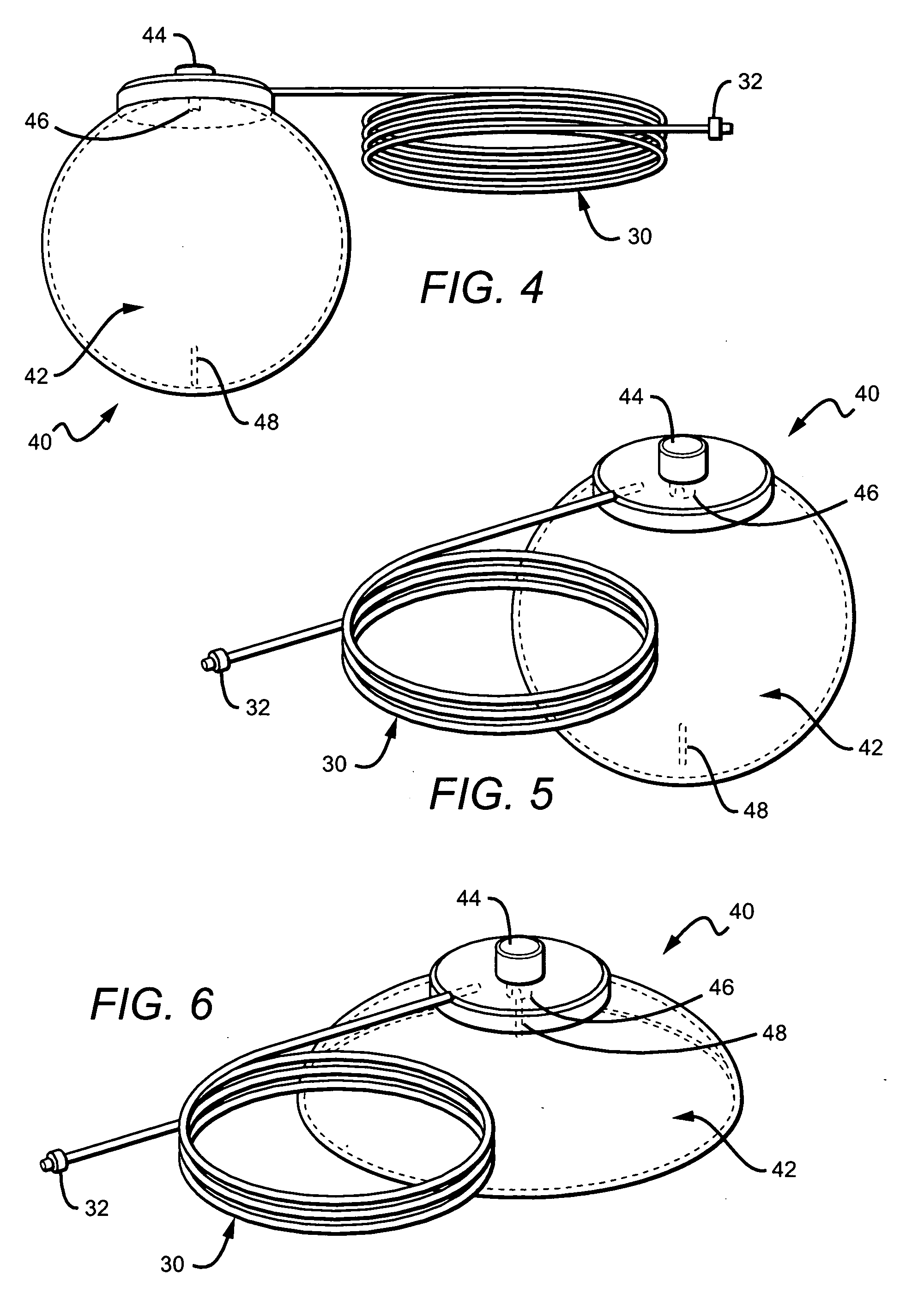Corporeal drainage system
a drainage system and corporeal technology, applied in the direction of suction drainage containers, transportation and packaging, other domestic objects, etc., can solve the problems of aggravating the problem, pleural effusion, over-accumulation of fluid in the pleural space, etc., and achieve the effect of reducing the amount of work required and low cos
- Summary
- Abstract
- Description
- Claims
- Application Information
AI Technical Summary
Benefits of technology
Problems solved by technology
Method used
Image
Examples
Embodiment Construction
[0031] The detailed description illustrates by way of example, not by way of limitation, the principles of the invention. This description will clearly enable one skilled in the art to make and use the invention, and describes several embodiments, adaptations, variations, alternatives and uses of the invention, including what is presently believed to be the best mode of carrying out the invention.
[0032] The embodiments described herein are directed to directed to a corporeal drainage system designed to effectively provide a user the ability to drain fluid from their body in a non-clinical setting with a minimum amount of effort. The embodiments of the invention generally contain a connection tube having a proximal end that is either detachably or permanently connected to a pump or container and a distal end that is fashioned with a connector device that permits quick, easy and secure attachment to a device or mechanism inserted within a bodily cavity, including, for example, an ind...
PUM
 Login to View More
Login to View More Abstract
Description
Claims
Application Information
 Login to View More
Login to View More - R&D
- Intellectual Property
- Life Sciences
- Materials
- Tech Scout
- Unparalleled Data Quality
- Higher Quality Content
- 60% Fewer Hallucinations
Browse by: Latest US Patents, China's latest patents, Technical Efficacy Thesaurus, Application Domain, Technology Topic, Popular Technical Reports.
© 2025 PatSnap. All rights reserved.Legal|Privacy policy|Modern Slavery Act Transparency Statement|Sitemap|About US| Contact US: help@patsnap.com



